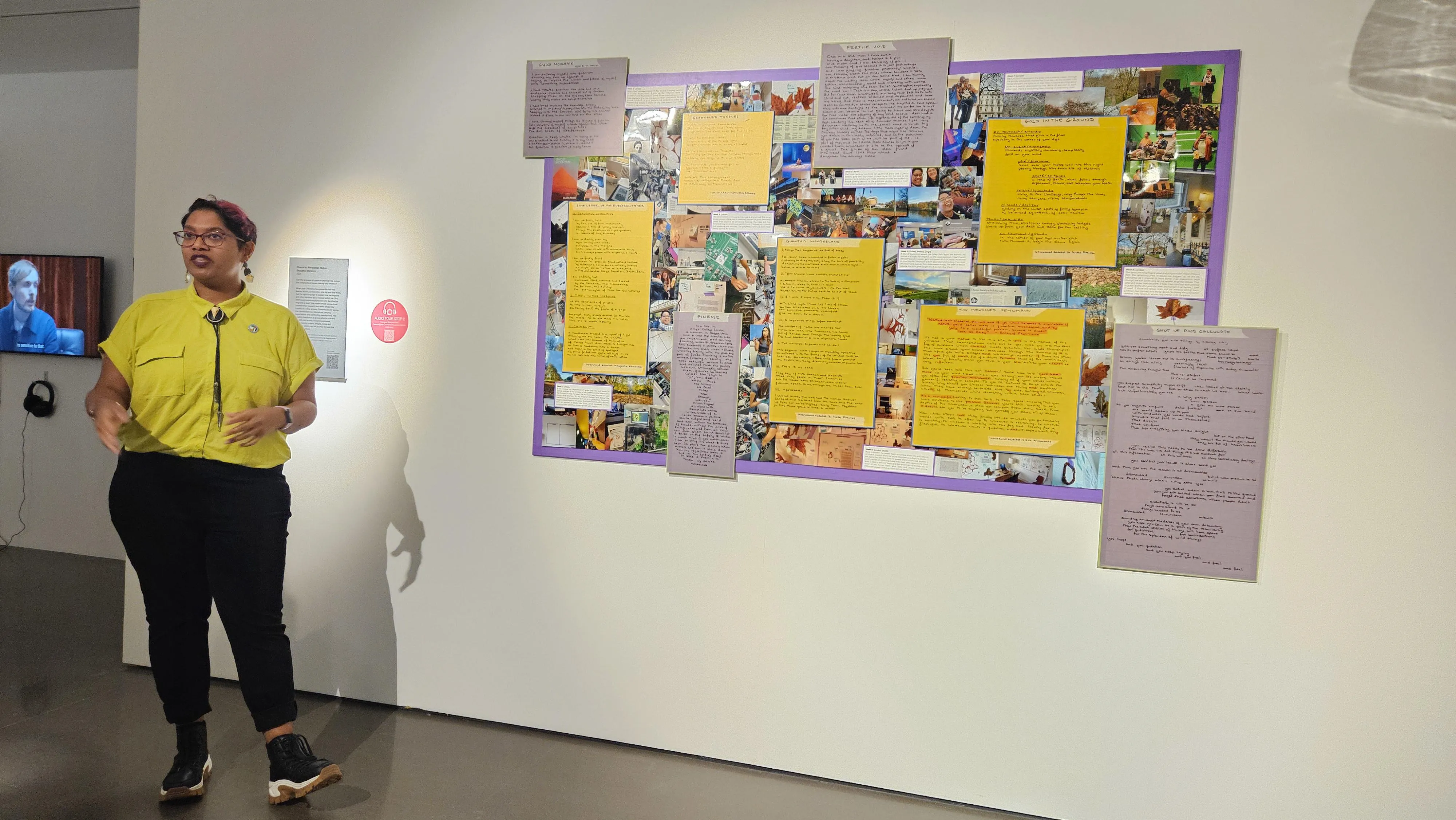Quantum Untangled
How do we understand reality? How do the smallest particles in the universe lead to the biggest ripples across vast scales of...
08 October 2025
Journalists and influencers joined academics at King’s to launch a new immersive exhibition exploring the hidden world of quantum.

The exclusive press briefing for ‘Quantum Untangled’, based at the Science Gallery on King’s College London campus, was attended by journalists from Al Jazeera, The Naked Scientist, popular science influencers the Dad Lab and Girls in Quantum, and more. It coincided with the announcement of the Nobel Prize for Physics being awarded to three quantum physicists for their advancements on the technology behind quantum computing.
Guests were given an exclusive tour of the exhibition, which celebrates 100 years of the first quantum discoveries, before it opens to the public, alongside talks from academics and artists.
‘Quantum Untangled’ draws on research from King’s Quantum – a dedicated team of interdisciplinary scientists helping to drive this area forward, shaping future technology.
Professor James Millen, Director of King’s Quantum, was among speakers who opened the event, telling guests: “This exhibition is a masterclass in trying to visualise things that are not possible to visualise. I hope guests will feel inspired by it as much as I did, bridging the gap between the science and art by drawing upon real-world research.
“Understanding quantum helps us understand absolutely everything in nature. It's really, really changing the world. The announcement of the Nobel Prize for Physics awarded to John Clarke, Michel H. Devoret and John M. Martinis for their work on the technology behind quantum computing on the very same day as the press event reflects this.”
Following the talks, the media were provided an exclusive tour by artists involved in the exhibition, Conrad Shawcross and Chandrika Narayanan-Mohan.
For one of the installations, ‘Ringdown’, artist Conrad Shawcross discussed how he was inspired by real-world experiments. ‘Ringdown’ represents the theoretical moment when two black holes merge and gravitational waves are emitted. Conrad created the collision of two fast spinning bells, reimagining gravitational waves as sound waves within this kinetic artwork.
Conrad Shawcross said: “For the last 25 years I have been attempting to visually represent scientific ideas and to unravel the constructed realities built around us. My use of rope and rope making is all about exploring time through metaphor and analogy. I was therefore recently very excited to discover that the gravitational waves created when two black holes collide are analogous to the turbulence around a whirlpool or vortex. This inspired me to create another analogy of two bells spinning and then colliding to attempt to represent this extraordinary cosmic phenomenon.”
Through the eyes of artists, scientists, philosophers and poets, Quantum Untangled considers the ways quantum ideas might alter how we understand reality – from tiny subatomic particles to the ever-expanding universe. King’s Quantum scientists Dr Mark Mitchison and Dr Eleanor Crane also untangle the complexities of quantum in a series of audio guides.
Beatrice Pembroke, Director of King’s Culture and Science Gallery London, added: “With Quantum Untangled, we set out to demystify the fascinating and powerful world of quantum through collaborations between artists and scientists. It has been so exciting to see the buzz from the press and quantum experts and we look forward to welcoming more students, staff and the wider public. We hope the exhibition will get more people questioning not just the role of quantum applications in our lives - but in how we understand reality and ourselves.”
King’s Quantum is driving this complex area of science – in line with the UK government’s National Quantum Strategy. The centre’s research spans many areas of science, from black holes, quantum computers and quantum-powered healthcare. King’s has played a pivotal role in the history of quantum research. Professor Charles Coulson (Chair of Theoretical Physics at King's College London from 1947 to 1952) was one of the pioneers in the application of quantum mechanics to understand how atoms bond together to form molecules. Fast forward to the 21st Century, King’s Quantum is shaping the future of technology for the next 100 years and beyond.
Entry to Quantum Untangled (Wed-Sat, 11am-6pm, 8 October 2025-28 February 2026) and all events at Science Gallery London is free.
Find out more: https://london.sciencegallery.com/quantum

How do we understand reality? How do the smallest particles in the universe lead to the biggest ripples across vast scales of...